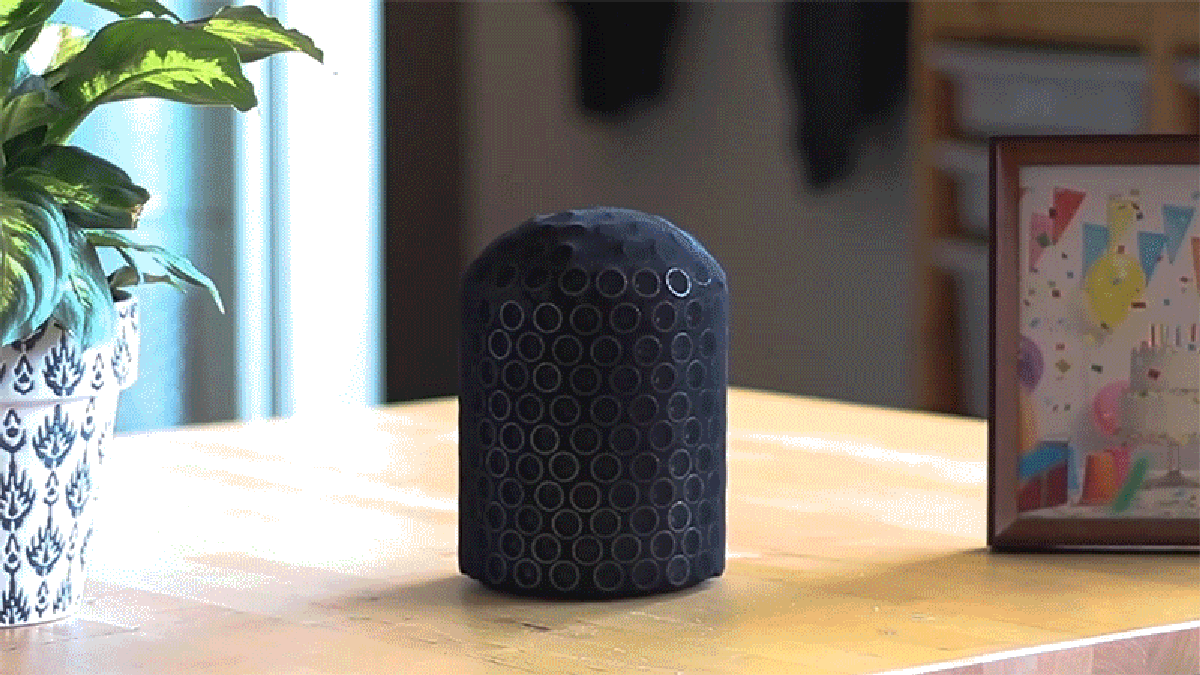If you get carried away with setting helpful reminders, you’ll eventually tire of your smart speaker’s endless nagging and start ignoring it. But what if instead of Siri or Alexa reminding you to water the plants or having your Pop Tarts ready, it looked like your ficus or your toaster was actually speak and try to get your attention?
Smart speakers have evolved from simple devices capable of streaming music and reporting the weather to central hubs that interface with all the other smart devices installed in your home. Everything from smart microwaves to smart washing machines can not only be controlled remotely with voice commands, but they’ve also been given their own voice through smart speakers that can provide audible reminders when a charge is of clothes is clean or when your popcorn is popped.
It can create a disconnect, however, when an alert for a given device, object, or device comes from the other side of your house, and it can be less impactful or memorable as a result. Perhaps you would be more inclined to water a plant if it made the plant itself seem to be begging you to drink. But instead of gluing speakers to every last item in your home, researchers from the Smash Lab at Carnegie Mellon University’s School of Computing have developed an even smarter prototype smart speaker that can project his voice like a ventriloquist, using some nifty tricks with sound. waves to give the impression that other objects in your home are talking to you.
Smash Lab’s digital ventriloquist prototype works very differently from a human ventriloquist. While a traditional ventriloquist tricks your brain into thinking a dummy is talking by holding the dummy close to him and not moving his lips while he makes noise, the digital ventriloquist uses moving servos, a webcam for visual targeting and a two-dimensional array of ultrasound transducers. .
The transducers emit a highly directional ultrasonic signal at approximately 40 kHz, which is well beyond the threshold of human hearing. As a result, there is no audible sound as the signal travels towards an object, but when these sound waves eventually collide and bounce off their target, they demodulate and produce frequencies that fall into our range. ‘hearing. Thus: Your plant speaks to you.
Even though the sounds all come from the smart speaker, the resulting effect isn’t technically an illusion; the sound messages actually emanate directly from a given object. Regardless of a person’s position in a given space relative to the object, they should always be able to discern exactly where it is coming from. In a study conducted by the researchers that involved five different objects in three unique environments, test subjects were able to correctly identify where the sound was coming from 92% of the time and repeat the message they heard 100% of the time.
In its current form, the digital ventriloquism prototype definitely looks the part, and the use of servos and a limited-size ultrasound array means it takes seconds to reposition itself and target a new object. That would be problematic in a real-world setting, so the researchers envision a design that more closely resembles the smart speakers you can buy from companies like Amazon and Apple. The design is completely surrounded by an array of transducers, so it can instantly transmit sounds in any direction. Its capabilities are limited to objects in the same room as the speaker itself, meaning you would need a number of them installed around your house to give every last object a voice. But once you did, you could spend your days talking to your possessions, and they would start responding to you.
Update, April 21, 3:23 p.m. ET: The research team contacted Gizmodo asking them to clarify that the lead author of the paper, Yasha Iravantchi, is currently a doctoral candidate at the University of Michigan, and that the project itself was a joint effort between CMU’s Smash Lab and Future Interfaces Group.

